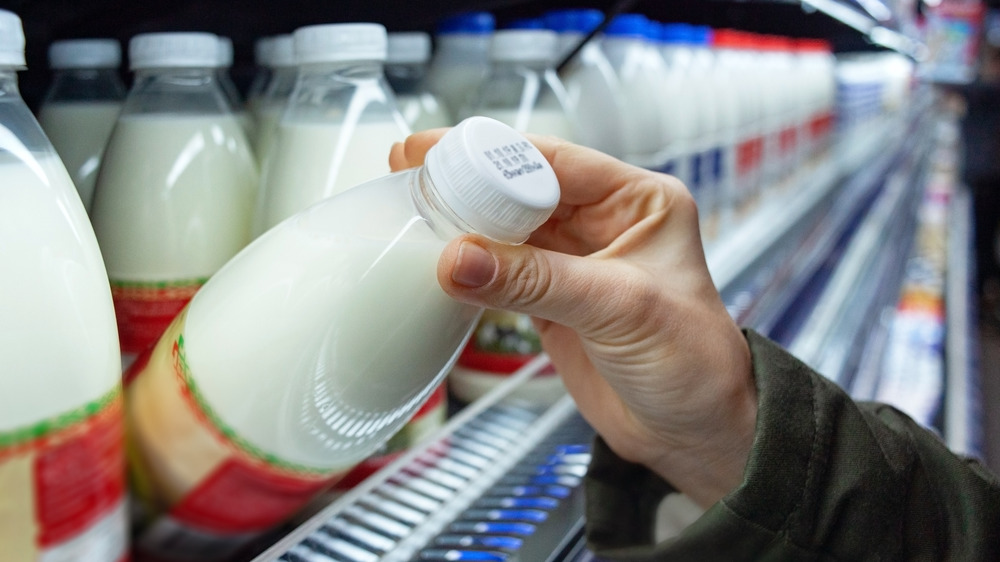How Are Expiration Dates Actually Determined?
Expiration dates can be more than a little confusing, especially since there are so many variations. In just one aisle of the grocery store, you might see packages that say "use by," "best by," and "expires," without much rhyme or reason as to why they're used or what the true difference is. But expiration dates aren't completely written in stone, as you might know if you've ever taken a chance on something in your fridge that's just a day or two past its "best by" date. And the process for determining expiration dates isn't as specific as you might expect.
According to the U.S. Department of Agriculture's Food Safety and Inspection Service, "open dates" (or expiration dates) can be applied by the manufacturer or retailer, and they're meant to give customers an idea of when the product will be at its best, and also help grocery stores know how long to display it on shelves. You might also see "closed dates" on some products, but these are usually just a series of letters or numbers that the manufacturer adds to a product to indicate what day and time it was produced.
And though you'll see expiration dates or "best if used by" dates on most products, they're not actually required by federal law. The USDA's website explains that dating is only required on infant formula, and it's voluntary for other products, including meat, eggs, and poultry. Additionally, except for infant formula, expiration dates aren't an indicator of whether or not a food is safe to eat; instead, they're just a measurement provided by the manufacturer to help determine when the product will be the best quality.
How do manufacturers determine expiration dates?
According to Gizmodo, food manufacturers usually rely on outside experts to help them determine what the "best by" or expiration dates should be. One example is the National Food Lab in Livermore, California, which lets food sit out for days, weeks, and months to help determine how long it'll last. Experts evaluate it at various stages to judge its taste, texture, and smell, then assign it a grade based on how well it's holding up. Then, food manufacturers can use these evaluations to help determine at what point their products are past their prime, which then helps them create accurate "best by" dates.
However, some manufacturers use different systems for labeling their products, which can have different meanings. For example, WebMD explains that if a product has a "sell by" date, it's meant to indicate how long stores should display the product, so you should just make sure you buy it before the expiration date. "Best if used by" is a better indicator of quality, and tells you when the product will be at its peak. Finally, "use by" dates are usually used to note the last recommended day to use the product at peak quality — it might still be safe to eat after this date, but it might not be as fresh.
So if you've always cleaned out your pantry or fridge based on expiration dates, you've almost definitely tossed a few food items that were still safe to eat. But the good news is, you don't have to toss that yogurt that's one day past its expiration date; as long as it still looks, smells, and tastes fine, according to the USDA, it should still be safe to eat.

